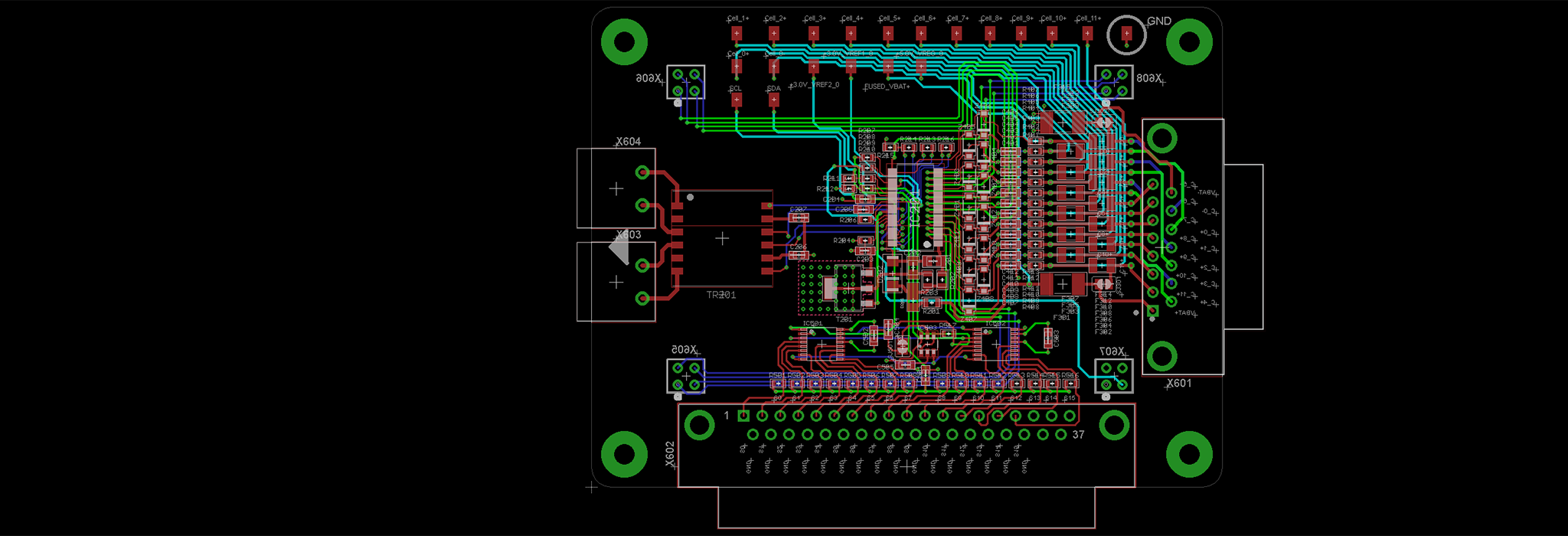Jahr
Year | Titel/Autor:in
Title/Author | Publikationstyp
Publication Type |
|---|
| 2023 |
Die Photovoltaik in Erneuerbaren Energiesystemen und aktuelle Forschungsergebnisse
Bett, Andreas W. |
Vortrag
Presentation
|
| 2023 |
Scientific Testing of Battery Cells and Systems: Insights from Comprehensive Laboratory Investigations
Kroll, Moritz |
Vortrag
Presentation
|
| 2023 |
PV Battery Power Plants in Europe Status, Trends and Potentials
Vetter, Matthias; Heimsath, Anna; Lorenz, Elke; Wille-Haußmann, Bernhard |
Vortrag
Presentation
|
| 2023 |
Crush Tests on Lithium Ion Battery Cells: Identifying Critical Force for Thermal Runaway and Ensuring Transportation Safety
Kroll, Moritz; Thiemann, Johannes |
Vortrag
Presentation
|
| 2023 |
R&D and Innovations for Photovoltaics
Bett, Andreas W. |
Vortrag
Presentation
|
| 2023 |
Data-driven snapshot methods leveraging data fusion to estimate state of health for maritime battery systems
Vanem, Erik; Bruch, Maximilian; Liang, Qin; Thorbjørnsen, Kristian; Valøen, Lars Ole; Alnes, Øystein Åsheim |
Zeitschriftenaufsatz
Journal Article
|
| 2023 |
Impuls Photovoltaik: Im Energiesystem und Produktion
Bett, Andreas W. |
Vortrag
Presentation
|
| 2023 |
Sicherheitsprüfungen, Abusetests und Charakterisierung der Performance von Lithium-Ionen Akkumulatoren
Engeser, Julian; Kroll, Moritz; Heuer, Adrian; Berg, Sascha; Laufen, Hendrik; Figgemeier, Egbert |
Vortrag
Presentation
|
| 2023 |
Elektromobilität in Mehrfamilienhäusern durch intelligente Ladestationen mit 2nd life Batteriespeicher
Vetter, Matthias |
Vortrag
Presentation
|
| 2023 |
Photovoltaics - from the Origins of Fraunhofer Institute for Solar Energy Systems to the Present Day
Bett, Andreas W. |
Vortrag
Presentation
|
| 2023 |
MARTERA - DDD-BATMAN. Data-Driven Degradation Monitoring and Prediction of Batteries for Maritime Applications
Grendze, Vanessa; Bruch, Maximilian |
Konferenzbeitrag
Conference Paper
|
| 2023 |
Crush Tests on Lithium Ion Battery Cells: Identifying Critical Force for Thermal Runaway and Safety in Transportation
Heuer, Adrian; Kroll, Moritz |
Vortrag
Presentation
|
| 2023 |
Behind-the-Meter PV Battery Systems
Vetter, Matthias |
Vortrag
Presentation
|
| 2023 |
Data-Driven Approaches to Diagnostics and State of Health Monitoring of Maritime Battery Systems
Vanem, Erik; Liang, Qin; Ferreira, Carla; Agrell, Christian; Karandikar, Nikita; Wang, Shuai; Bruch, Maximilian; Salucci, Bertinelli; Grindheim, Christian; Kejvalova, Anna; Alnes, Øystein Åsheim; Thorbjørnsen, Kristian; Bakdi, Azzeddine; Kandepu, Rambabu |
Konferenzbeitrag
Conference Paper
|
| 2023 |
Extending the Remaining Useful Lifetime of EV Batteries in Stationary Second-Life Applications
Vetter, Matthias |
Vortrag
Presentation
|
| 2023 |
Stationary Battery Storage - From Small-scale Residential up to Utility-scale Applications
Vetter, Matthias |
Vortrag
Presentation
|
| 2023 |
Nachhaltige Photovoltaik-Produktion in Europa - Jetzt die Chancen ergreifen
Bett, Andreas W. |
Vortrag
Presentation
|
| 2023 |
Battery System modeling for SOH estimation - Analysis of battery aging and its impact
Bruch, Maximilian |
Vortrag
Presentation
|
| 2023 |
Integration Of C&I Battery Storage In Heavily Loaded Distribution Grids
Vetter, Matthias |
Vortrag
Presentation
|
| 2023 |
Battery Storage - Key Enabler for Large-Scale Integration of Renewable Energies
Vetter, Matthias |
Vortrag
Presentation
|
| 2022 |
The Promise Towards Terawatt Photovoltaics
Bett, Andreas W. |
Vortrag
Presentation
|
| 2022 |
Herausforderung Energiewende - Was muss getan werden?
Bett, Andreas W. |
Vortrag
Presentation
|
| 2022 |
Scanning Acoustic Microscopy as a Non-Destructive Tool for the Localization of Defects Inside Pouch Cell Batteries
Münch, Johannes |
Vortrag
Presentation
|
| 2022 |
Von der Charakterisierung einer Batteriezelle bis zur Simulation eines Batteriemoduls
Hirschburger, Yannic |
Vortrag
Presentation
|
| 2022 |
Characterization of Aged Electrodes of Lithium-Ion-Battery
Jabri, Slaheddine |
Vortrag
Presentation
|
| 2022 |
Herausforderungen bei der Energiewende
Bett, Andreas W. |
Vortrag
Presentation
|
| 2022 |
Fire Safety in PV and Battery Systems
Kulenkampff, Felix; Schmidt, Heribert |
Vortrag
Presentation
|
| 2022 |
Stationary battery storage for successful energy transition applications, developments and challenges
Vetter, Matthias |
Vortrag
Presentation
|
| 2022 |
Development and Analysis of an Off-grid Solar Food Processing System in Kenya
Morgenstern, Alexander; Subasi, Dilara Maria; Pfanner, Norbert; Reiners, Nils; Stortz, Felix; Wüllner, Johannes; Maruf, Md Nasimul Islam |
Konferenzbeitrag
Conference Paper
|
| 2022 |
Simulationsgestützte Optimierung des Batterieverschaltungsprozesses
Beinert, Andreas; Romer, Pascal; Hirschburger, Yannic |
Vortrag
Presentation
|
| 2022 |
Innovation Region Fessenheim Green Batteries and Circular Economy
Vetter, Matthias |
Vortrag
Presentation
|
| 2022 |
Research on High-Efficiency Tandem Solar Cells on Silicon at Fraunhofer ISE
Bett, Andreas W. |
Vortrag
Presentation
|
| 2022 |
Integration of Second-Life Batteries as Buffer Storage in Apartment Buildings
Vetter, Matthias; Bruch, Maximilian; Kevlishvili, Nina; Reiners, Nils |
Vortrag
Presentation
|
| 2022 |
Battery Cell Characterization Using Thickness Measurements
Pitta Bauermann, Luciana |
Vortrag
Presentation
|
| 2022 |
Resolution Challenges Measuring Local Thermal Inhomogeneities of Lithium-Ion Pouch Cells. A feasibility study for localizing thermal related aging processes
Engeser, Julian |
Vortrag
Presentation
|
| 2022 |
Warum wir eine europäische PV-Industrie brauchen und wie das gehen könnte
Bett, Andreas W. |
Vortrag
Presentation
|
| 2022 |
Simulative Investigation of Measures to Prevent Thermal Runaway Propagation in Li-Ion-Battery Modules
Gamisch, Sebastian |
Vortrag
Presentation
|
| 2022 |
Influence of fillers on performance of molten salt thermocline storage
Weiss, Julius; Wagner, Nils; Aprea, Vincenzo; Haas, Fridolin; Fluri, Thomas |
Konferenzbeitrag
Conference Paper
|
| 2022 |
Webinar "Gibt es das saubere Modul" - Stand der Technik
Bett, Alexander J. |
Vortrag
Presentation
|
| 2022 |
The Major C&I Storage Applications for Germany - Results from a Survey and Exemplary Installations
Vetter, Matthias |
Vortrag
Presentation
|
| 2022 |
Photovoltaic will Power the World
Bett, Andreas W. |
Vortrag
Presentation
|
| 2021 |
Battery Storage - Key Enabler for Large-Scale Integration of Fluctuating Renewables
Vetter, Matthias |
Vortrag
Presentation
|
| 2021 |
Development of a PCM-composite for the Thermal Management of Li-ion Batteries
Gamisch, Sebastian |
Vortrag
Presentation
|
| 2021 |
The role of batteries in meeting the PV terawatt challenge
Peters, I.M.; Breyer, C.; Jaffer, S.A.; Kurtz, S.; Reindl, T.; Sinton, Ronald A.; Vetter, Matthias |
Zeitschriftenaufsatz
Journal Article
|
| 2021 |
Report zur Batterieverschaltung Materialien - Technologien - Marktsituation. White Paper
Schiller, Christian; Kraft, Achim |
Paper
|
| 2021 |
Batteries for Electric Vehicles - Current Status and New Developments
Vetter, Matthias |
Vortrag
Presentation
|
| 2021 |
Current Developments in the Field of Batteries
Vetter, Matthias |
Vortrag
Presentation
|
| 2021 |
Meaningful Characterization of Battery Cells and Systems with Current Pulses
Bruch, Maximilian; Kevlishvili, Nina; Hofmann, L.; Lux, Stephan; Vetter, Matthias |
Vortrag
Presentation
|
| 2021 |
Battery Storage - Key Enabler for Resilient Active Distribution Grids and Mini-Grids
Vetter, Matthias |
Vortrag
Presentation
|
| 2021 |
Outlining Known Battery Cell and System Safety Issues and the Need for Thermal Propagation Inhibition
Kroll, Moritz |
Vortrag
Presentation
|
| 2020 |
Battery Management Systems for Dynamic Systems. Short Overview of Current Work on Battery Management Systems
Milde, W. |
Vortrag
Presentation
|
| 2020 |
Utilization of Aged Electric Vehicle Batteries as Stationary Buffer Storage. Insights into Project EMILAS
Vetter, Matthias |
Vortrag
Presentation
|
| 2020 |
Batteries for Electric Vehicles - Current Status and New Development
Vetter, Matthias |
Vortrag
Presentation
|
| 2020 |
Herausforderungen und Perspektiven bei Lithium-Ionen Batterien
Kevlishvili, Nina; Risse, S.; Figgemeier, E.; Ehrenberg, H.; Fichtner, M.; Brütting, M. |
Konferenzbeitrag
Conference Paper
|
| 2019 |
60 is the New 20: Challenges as a Result of Increasing EV Battery Capacities
Vetter, Matthias |
Vortrag
Presentation
|
| 2019 |
Battery Storage for Grid Connected PV Applications
Vetter, Matthias; Lux, Stephan; Wüllner, Johannes |
Aufsatz in Buch
Book Article
|
| 2019 |
In the Context of Energy Transition Scenarios
Vetter, Matthias |
Vortrag
Presentation
|
| 2019 |
Quality Assurance for PV Battery Storage Projects
Vetter, Matthias |
Vortrag
Presentation
|
| 2019 |
Testing and Evaluating Thermal Performance of Battery Systems
Heuer, Adrian; Bruch, Maximilian |
Vortrag
Presentation
|
| 2019 |
Battery Storage and their Stationary Applications
Vetter, Matthias |
Vortrag
Presentation
|
| 2019 |
Thermal Battery Management, Key to Efficiency and Longevity
Bruch, Maximilian; Millet Biosca, L.; Vetter, Matthias |
Vortrag
Presentation
|
| 2019 |
Battery Storage. Opportunities, Challenges and Measures for Risk Mitigation
Vetter, Matthias |
Vortrag
Presentation
|
| 2019 |
Energy Storage for Renewable Power Supply Systems
Vetter, Matthias |
Vortrag
Presentation
|
| 2019 |
Extensive Analysis of Photovoltaic Battery Self-Consumption: Evaluation Through an Innovative District Case-Study
Millet Biosca, Lluis; Berueta, A.; Bruch, Maximilian; Reiners, Nils; Vetter, Matthias |
Zeitschriftenaufsatz
Journal Article
|




